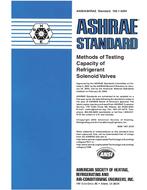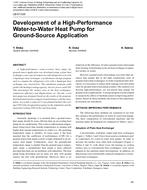The Houston Astrodome, the first large covered and airconditioned stadium, was commissioned in the mid-1960s. It held up to 70,000 people for an event, and smoking of tobacco products was permitted. It needed innovative concepts to predict and control the haze of tobacco smoke. The engineers thought the haze from the smoke would obscure the vision of the audience unless vast amounts of outdoor air were used to dilute the haze. They decided to use high-efficiency air cleaners to treat the return air. A novel method was devised to predict the haze over as much as 550 ft of viewing distance from the events. The haze levels with various recirculation rates through the filters could be predicted, and a design, which was expected to reduce the haze to acceptable levels for the spectators, could be obtained. The actual performance of the Astrodome was successful, supporting the design. Activated charcoal filters were also used to control eye-burning and odors, but that design is not covered in this paper.
Units: I-P
Citation: ASHRAE Transactions, Vol. 113, pt 1, Dallas 2007
Product Details
- Published:
- 2007
- Number of Pages:
- 5
- File Size:
- 1 file , 1.8 MB
- Product Code(s):
- D-DA-07-025


